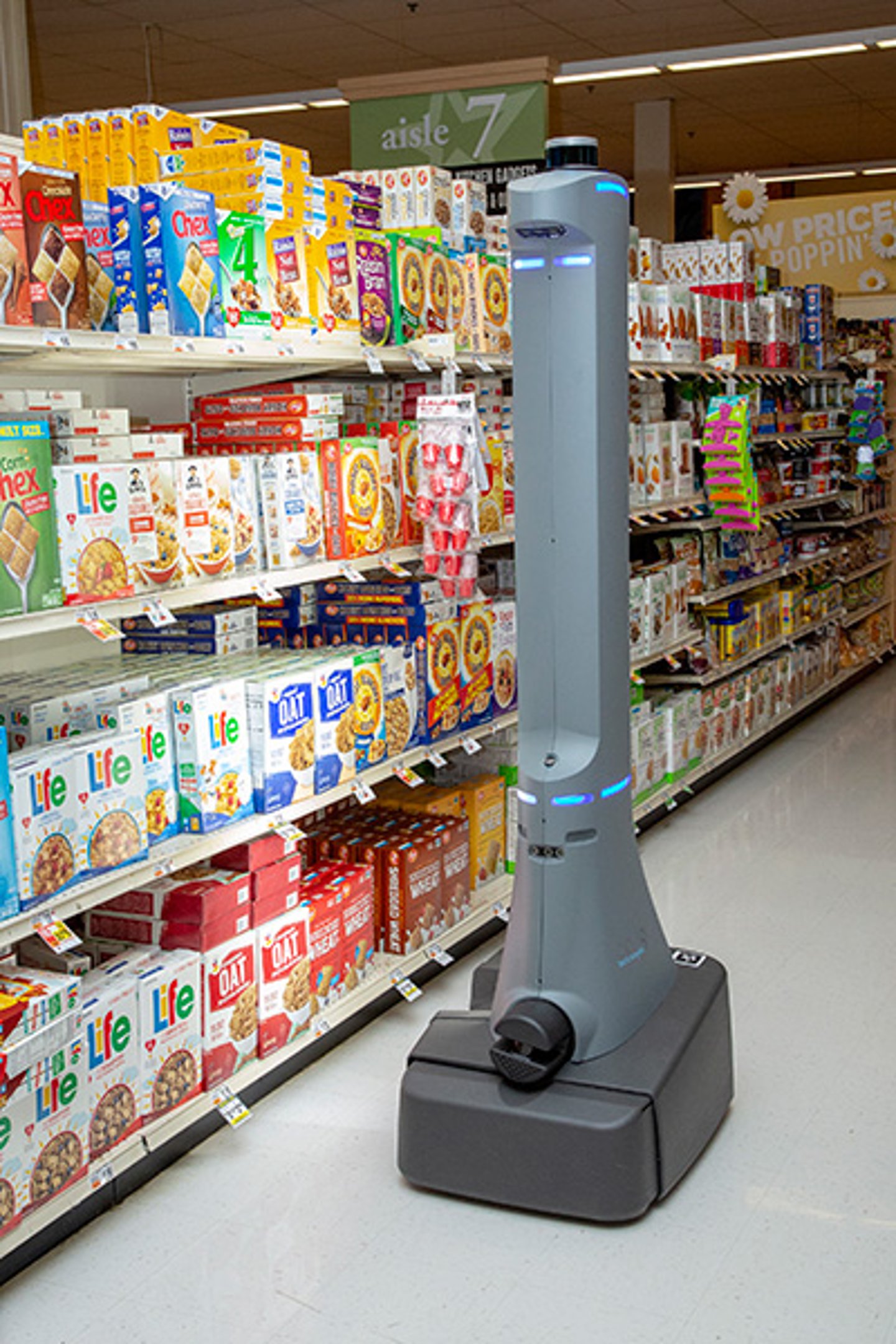CSA Exclusive: Woodman’s fills store inventory gaps with robots
A regional Midwest grocer is helping keep shelves properly stocked during the COVID-19 pandemic with robotic assistance.
Employee-owned Woodman’s Markets, which operates 18 large-format grocery stores in Wisconsin and Illinois, has been piloting multipurpose robots equipped with the Badger Technologies Retail Insight solution since 2018. In 2020, the retailer began widescale rollout of the robots to monitor product availability, verify prices, and deliver precise location data.
Chain Store Age recently had an exclusive conversation with Tyler Davis, IT project coordinator at Woodman’s, to get more detail on the grocer’s robotic technology deployment, particularly as it pertains to meeting the challenges of COVID-19.
“Our typical store is 245,000 sq.-ft. and carries 100,000 items,” explained Davis. “With so many products, our stores have 24 aisles, and those aisles are on average 96 feet long.”
Even before the U.S. outbreak of the pandemic in March, monitoring products and prices on the shelf proved challenging for Woodman’s. Leveraging imaging tools and neural networks within the robots, Woodman’s has been able to detect out-of-stock items with more than 95% accuracy and incorrect and mispriced products with over 90% accuracy.
However, due to supply chain shortages and surges in demand for certain products that have occurred during COVID-19, Woodman’s has also had to perform “landfilling” on its shelves with some robotic help.
“We need to make sure products are spread across shelves,” said Davis. “We have to fill gaps caused by out-of-stocks or supply chain outages.”
Woodman’s is able to have associates check shelves that the Badger-equipped robots determine have empty spaces, compare missing items to inventory currently in stock at warehouses, and either order refills or replace out-of-stock goods with other surplus inventory.
“Also, we have lots of out-of-stocks for discount items,” added Davis. “The store manager can be notified to immediately address the issue by putting up replacement tags or rearranging the shelf.”
The retailer is also able to provide the Badger solution’s data on where products are located on the shelves back to the warehouses. This enables Woodman’s to arrange products on pallets by the order in which associates pick them for placement in store aisles.
“Instead of having items spread across the pallet and breaking them down into new pallets at the store, we can just stock directly from the pallets,” explained Davis.
Other uses for the Badger robots include ensuring planogram compliance. This is especially important as individual Woodman’s locations have autonomy to create store-level promotions.
“We make sales deals at the store level, between the manager and the product sales representative,” said Davis. “There can be discounts on store promotions, and the robots provide a better eye for scorecarding with the merchandiser.”
According to Davis, reductions in out-of-stocks and mis-stocks have reached as high as 70% at one store. The robotic solution also enables the retailer to make it easier to perform overnight stock level checks with a small number of associates, saving two to three hours of labor per night.
As an independent retailer, Davis said Woodman’s has more flexibility than many of its larger, corporate competitors to test new technologies and strategies. Woodman’s was an early adopter of UPC barcodes in the 1970s, and is now testing the use of robotic “tunnel scanning” with electronic shelf labels (ESLs).
“We have a very free will to explore, expand and optimize things,” said Davis. “We initially took the results of our robotics pilot at face value, and now have the opportunity to get inside the real value of the data.”
That value even extends to customer-facing activities, as Davis explained.
“By making the associate’s job easier at the store level, we put them in a better mood, which leads to better customer service down the line,” he stated.


